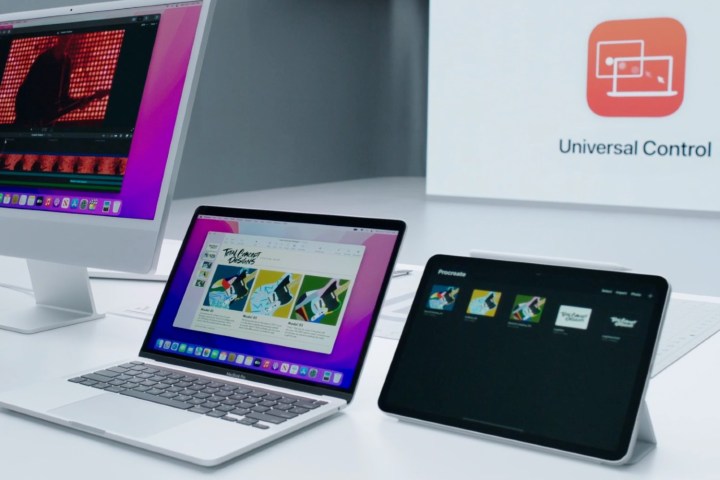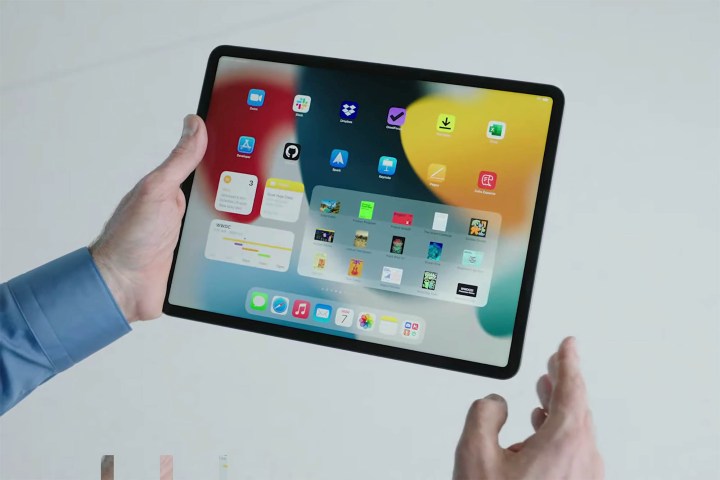For the longest time, Apple has confidently claimed that the iPad can replace your laptop, and for the longest time, that simply wasn’t true. But after yesterday’s Worldwide Developers Conference (WWDC) announcements about changes coming in iPadOS 15, we are starting to think Apple might actually be coming closer.
That is because most people, whether they mainly use a tablet or a laptop, do not need a huge amount of power — they need a capable work and leisure machine. With iPadOS 15, particularly its notes and multitasking features, we are finally at a point where the iPad fills that role admirably. But even with all the excellent developments at WWDC, it still has a long way to go for many users.
Software catching up

The iPad Pro is the best tablet that money can buy, and its cheaper iPad siblings are not far behind. But the thing that makes them so class-leading is their blazing-fast hardware. As was so dramatically demonstrated with the M1 chip, Apple’s silicon team is leagues ahead of the chasing pack.
Yet the iPad’s software has always held it back. Apple took an age to bring support for mice and keyboards to its tablets, and the iPad still lacks the kind of window management chops that are ancient history on the Mac. It is a disparity that has not been lost on iPad users.
At WWDC, though, Apple closed the gap a little more. There was no eureka moment, but the changes announced at Apple’s developer show might have finally tipped iPadOS over the precipice of laptop replacement.
For example, you can now work with multiple windows of the same app, something iPadOS has desperately needed for years. What’s more, Apple made it easy to manage these windows with its ‘shelf’ system, averting the worry that you might lose track of them with too many open.

Universal Control, meanwhile, was one of the best features announced. It lets you seamlessly move between your Mac and your iPad, dragging and dropping files from one screen to another. You can even control your iPad using Mac trackpad gestures and keyboard shortcuts. In other words, the iPad becomes a miniature touchscreen Mac of sorts — limited, sure, but a lot more capable than it has ever been. That feature alone doesn’t mean it will replace your Mac, but it puts Apple’s tablet on slightly more even footing with its Macs (note that it does not work solely between two iPads, disappointingly).
Even before Apple outfitted the iPad Pro with its incredibly powerful M1 chip, the iPad’s hardware still far outstripped what most people could do on it. Now, the software seems to be catching up (although it still has a fair way to go). For many people, though, it now does enough to be their main daily driver.
In fact, the iPad can do plenty of things the Mac cannot, including offering a touchscreen and Apple Pencil support. And with even the $329 iPad supporting the Apple Pencil and keyboard cases, a lot of people will be quite happy to ditch their laptop and go tablet-only.
The pro-level shortfall

But let’s not get carried away here — there are some people for whom an iPad is about as useful as an ashtray on a motorcycle, and for whom it still cannot replace their computer. I’m talking about pro users with demanding workloads, people who will have been left frustrated by Apple’s WWDC show and its lack of progress in this area.
Apple has been running Mac Catalyst, its framework that enables developers to port their iPad and iPhone apps to the Mac, for a few years now. It is finally evolving into a halfway decent system, but almost since day one, people have been asking when Apple will do the reverse and get Mac apps onto the iPad.
Those people are still waiting. With so much power at its disposal — including the M1 chip and up to 16GB of RAM — the iPad Pro is more than capable of flying through apps like Final Cut Pro and Logic Pro, yet Apple refuses to allow them on its tablets. Worse, it hobbles performance by only permitting apps to use 5GB of RAM, limiting the possibilities of the few high-end apps that can run on an iPad.
And while Apple pointed to its Swift Playgrounds update that lets developers publish apps from their iPad for the first time, Swift Playgrounds is no Xcode. The former is designed to be an educational app aimed at young adults and first-time learners. The latter is a full-powered app for professional developers building complex apps. Mac users got Xcode Cloud, a huge update that provides some much-needed modernizing features, but iPad users were left disappointed.
Protecting MacBook sales

When you look at the course of iPad development over the last couple years, it feels like a case of Jekyll and Hyde. On the one hand, you have a hardware team that is pushing itself to the maximum, building incredibly powerful devices that leave rivals in the dust. On the other, you have a software team that is operating with blinders on, doing good work but never able to fully take advantage of the hardware its counterparts offer up.
That is not from lack of trying or lack of ability on the part of the software team — they are doing the best they can within the constraints they are under. Instead, this is almost certainly a decision made at the highest levels. And it makes sense, in a way.
Put simply, Apple does not want the iPad to cannibalize sales of its MacBooks. If the iPad could run Mac-level apps, the need to step up to a MacBook would be greatly diminished for large numbers of people. No company wants to undercut its own devices, but for a company that makes as much profit on its products as Apple does, it is unthinkable.
What we have here is essentially a question of semantics. Remember when Apple reminded us that the iPad could replace your laptop? Note that it didn’t say the iPad could replace your MacBook. Apple wants you to buy an iPad instead of a Windows laptop, but it also really wants you to keep buying MacBooks as well. This is about strengthening Apple’s ecosystem, not undermining it.
Many people will buy an iPad to replace their MacBook, but by holding back its tablet software, Apple is ensuring those numbers never get out of control. As long as that continues, there will always be a sizable chunk of users for whom the iPad will never replace their computer.
Editors' Recommendations
- How an iPad just set a Geekbench record
- The biggest threat to the MacBook this year might come from Apple itself
- Why you should buy a MacBook Pro instead of a MacBook Air
- The MacBook Air M3 has one change that fixes its biggest flaw
- Could the Vision Pro replace your iPad? There’s just one problem




